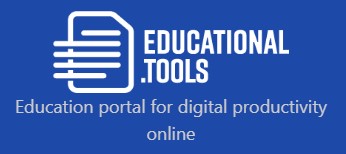The Evolution of Education Tools: Transforming Learning Experiences

Strong 8k brings an ultra-HD IPTV experience to your living room and your pocket.
In the fast-paced world of technology, education tools have evolved dramatically to create more interactive, engaging, and effective learning experiences. From traditional textbooks to interactive applications, these tools have not only facilitated knowledge transfer but have also transformed the ways in which both educators and students approach learning. This article explores some of the most significant Education Tools that are revolutionizing classrooms and expanding the horizons of learning.
1. Digital Learning Platforms
One of the most significant changes in education has been the rise of digital learning platforms. Websites and apps like Khan Academy, Coursera, and edX provide students with access to a wide range of courses from leading institutions globally. These platforms often feature video lectures, quizzes, and interactive content, allowing students to learn at their own pace. This flexibility is particularly beneficial for non-traditional learners who may have jobs, family commitments, or other responsibilities.
2. Learning Management Systems (LMS)
Learning Management Systems such as Moodle, Google Classroom, and Blackboard have also changed the educational landscape. These systems streamline course administration, delivering content, tracking student progress, and facilitating communication between educators and learners. LMS platforms allow instructors to create and manage courses efficiently, enabling a more organized approach to education that fosters student engagement.
3. Gamification
Gamification is another innovative approach that has gained popularity in recent years. By incorporating game-like elements into the learning process, educators can motivate students through challenges, rewards, and competition. Tools like Kahoot!, Quizizz, and Classcraft harness the power of game mechanics to make learning more enjoyable and encourage participation. Research has shown that gamified learning can lead to improved retention rates and heightened enthusiasm among students.
4. Virtual and Augmented Reality (VR/AR)
Virtual and augmented reality technologies are making waves in educational settings, offering immersive experiences that can enhance comprehension of complex subjects. Tools like Google Expeditions and Nearpod VR allow students to explore historical landmarks, dive into the human body, or even travel through space without leaving the classroom. These experiences stimulate curiosity and make learning much more engaging, especially for visual and kinesthetic learners.
5. Collaborative Tools
Collaboration is essential in the learning process, and tools that promote teamwork have become increasingly vital. Platforms such as Microsoft Teams, Slack, and Google Workspace allow students to work together on projects in real-time, fostering a sense of community and collaboration. These tools also help in developing essential skills such as communication, problem-solving, and critical thinking, which are crucial for success in the modern workforce.
6. Artificial Intelligence (AI) and Personalization
Artificial intelligence is breaking new ground in education by enabling personalized learning experiences. AI-driven platforms can assess individual learning styles, strengths, and weaknesses and adjust the educational content accordingly. For instance, tools like DreamBox and Smart Sparrow provide adaptive learning experiences, ensuring that each student receives the support they need to thrive. This level of personalization can help close achievement gaps and cater to diverse learner needs.
7. Assessment Tools
Gone are the days of paper-based testing. Modern assessment tools like Formative, Socrative, and Turnitin provide educators with innovative ways to evaluate student understanding. These platforms often include formative assessment features that allow teachers to receive real-time feedback on student performance, enabling timely interventions when necessary. Additionally, tools that promote peer review processes encourage students to engage critically with their work and that of their peers.
Conclusion
The integration of these education tools marks a significant step toward a more inclusive, engaging, and effective learning environment. As technology continues to advance, the potential for educational innovation is only bound to grow. Embracing these tools is essential for educators who aim to prepare students for a rapidly changing world, encouraging lifelong learning, creativity, and critical thinking skills. By leveraging technology effectively, we can transform education into a more interactive and enriching experience for everyone involved.
Note: IndiBlogHub features both user-submitted and editorial content. We do not verify third-party contributions. Read our Disclaimer and Privacy Policyfor details.


